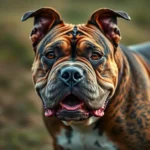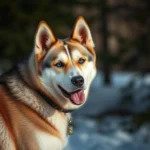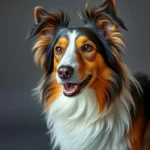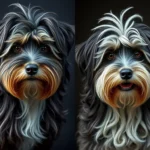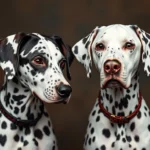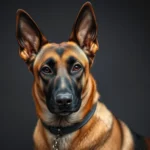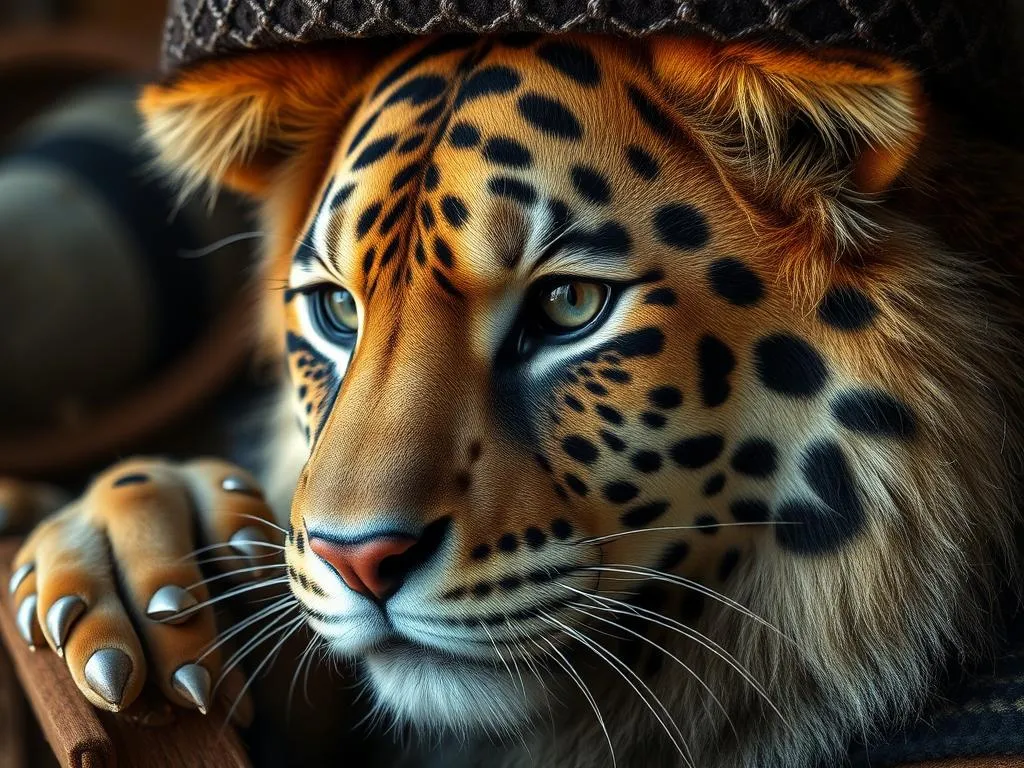
Introduction
Dog breeds are categorized groups of domestic dogs that share specific characteristics, such as size, coat type, and temperament. Understanding different dog breeds is crucial for potential owners, helping them select a pet that suits their lifestyle and family dynamics. Among the many breeds available, the Schnocker has garnered significant attention and popularity.
The Schnocker is a delightful mixed breed, resulting from the combination of the Schnauzer and the Cocker Spaniel. This breed is celebrated for its unique appearance, friendly demeanor, and adaptability to various living situations. With its distinctive traits, the Schnocker has piqued the interest of many dog lovers.
This article aims to provide a comprehensive guide to the Schnocker, detailing its characteristics, care requirements, training needs, and how it compares to other dog breeds. Whether you’re considering adopting a Schnocker or simply curious about this charming breed, this guide will offer valuable insights.
Understanding the Schnocker
What is a Schnocker?
The Schnocker is a mixed breed that emerges from the crossbreeding of a Schnauzer and a Cocker Spaniel. This breed mix has roots in the desire to create versatile, loving companions that combine the best traits of both parent breeds. The Schnauzer, known for its intelligence and spirited nature, and the Cocker Spaniel, celebrated for its affectionate personality, contribute to the Schnocker’s endearing qualities.
Historically, both parent breeds have been popular family pets. The Schnocker, as a hybrid, has gained traction in recent years due to its appealing size, temperament, and adaptability, making it a favorite among families and individuals alike.
Physical Characteristics
Size and Weight
Schnockers typically stand between 12 to 18 inches tall at the shoulder and weigh between 20 to 45 pounds. This size makes them suitable for various living situations, from apartments to larger homes with yards.
Coat and Color Variations
The Schnocker’s coat can vary significantly, reflecting the diverse genetics of its parent breeds. Common coat types include:
- Curly: Similar to the Schnauzer, often requiring regular grooming to prevent matting.
- Wavy: A soft texture, combining attributes from both breeds, easy to manage with regular brushing.
- Straight: Characteristic of the Cocker Spaniel, often necessitating frequent grooming.
Color-wise, Schnockers can come in various shades, including black, brown, cream, and combinations of these colors. Unique patterns may also appear, making each Schnocker distinct.
Temperament and Behavior
Personality Traits
Schnockers are known for their friendly and affectionate nature. They are intelligent, eager to please, and generally get along well with both children and other pets. Their energetic disposition makes them playful companions, while their loyalty ensures they form strong bonds with their families.
Socialization Needs
Socialization is crucial for Schnockers. Early exposure to various environments, people, and pets helps them develop into well-adjusted adults. Regular interactions will minimize any potential behavioral issues and ensure they remain friendly and confident in different settings.
Health Considerations
Common Health Issues
Like many mixed breeds, Schnockers can inherit health issues from either parent breed. Some potential health concerns include:
- Hip Dysplasia: A common condition in many dog breeds, affecting mobility.
- Ear Infections: Due to their floppy ears, they may be prone to infections.
- Eye Problems: Conditions such as cataracts or progressive retinal atrophy may occur.
Lifespan
The average lifespan of a Schnocker ranges from 12 to 15 years. Factors influencing longevity include genetics, diet, exercise, and regular veterinary care. Providing a healthy lifestyle can significantly enhance their quality of life.
Caring for a Schnocker
Nutrition
Dietary Needs
A well-balanced diet is essential for the health and well-being of your Schnocker. Recommended types of food include:
- Kibble: High-quality dry dog food is often the most convenient option.
- Wet Food: Canned food can be beneficial for hydration and palatability.
- Raw Diet: Some owners opt for raw diets, but it’s important to consult with a veterinarian to ensure nutritional balance.
Feeding Guidelines
Portion sizes and feeding schedules should be tailored to your Schnocker’s age, weight, and activity level. Generally, adult Schnockers should be fed twice a day, while puppies may require three to four meals. Always consult your veterinarian for personalized recommendations.
Grooming Requirements
Coat Maintenance
Regular grooming is essential to maintain your Schnocker’s coat. Depending on the coat type, grooming frequency may vary:
- Curly Coats: Require frequent brushing (2-3 times a week) to prevent matting.
- Wavy Coats: Brush once a week to keep it healthy and clean.
- Straight Coats: May need less frequent grooming but should be checked regularly.
Bathing and Ear Care
Bathing should occur every few months or as needed, using dog-specific shampoos. Regular ear cleaning is crucial, especially for Schnockers with floppy ears, to avoid infections. Use a gentle ear cleaner and cotton balls, avoiding deep insertion into the ear canal.
Exercise and Activity
Daily Exercise Requirements
Schnockers are energetic dogs requiring regular exercise to stay healthy and happy. Aim for at least 30 to 60 minutes of activity daily, which may include:
- Walks: Regular walks provide physical exercise and mental stimulation.
- Playtime: Interactive play, such as fetch or tug-of-war, helps burn off energy.
- Agility Training: Engaging in agility courses can be a fun way to exercise both body and mind.
Mental Stimulation
In addition to physical activity, Schnockers benefit from mental stimulation. Activities such as training sessions, puzzle toys, and scent games can help keep their minds sharp and engaged.
Training a Schnocker
Basic Obedience Training
Importance of Training
Early training is crucial for Schnockers. It helps establish good behavior, strengthens the bond between the dog and owner, and ensures that the dog is well-mannered in various situations.
Training Techniques
Positive reinforcement methods are the most effective way to train a Schnocker. Use treats, praise, and play to reward good behavior. Common commands to teach include:
- Sit
- Stay
- Come
- Down
Socialization Training
Importance of Socialization
Socialization is vital for Schnockers to develop a well-rounded personality. It helps them become confident and reduces anxiety in new situations.
Best Practices for Socializing a Schnocker
Introduce your Schnocker to new environments, people, and pets gradually. Puppy classes, dog parks, and controlled meet-and-greets with other dogs can provide excellent opportunities for socialization. Always supervise interactions to ensure positive experiences.
Schnocker vs. Other Breeds
Comparing with Other Mixed Breeds
Schnockers are often compared to other popular mixed breeds, such as the Cockapoo (Cocker Spaniel + Poodle) and the Schnoodle (Schnauzer + Poodle). While each breed has its unique attributes, Schnockers are generally known for their friendly nature and adaptability.
Schnockers may be slightly more energetic than Cockapoos but are equally affectionate. In comparison to Schnoodles, Schnockers might require more grooming due to their coat types.
Schnocker vs. Pure Breeds
When considering a Schnocker versus purebred dogs, there are advantages and disadvantages to each.
Advantages of Schnockers:
– Hybrid Vigor: Mixed breeds often exhibit fewer genetic health issues.
– Unique Characteristics: Each Schnocker has its own appearance and personality due to genetic diversity.
– Adaptability: Schnockers tend to adapt well to different living situations and lifestyles.
Disadvantages:
– Unpredictability: As a mixed breed, certain traits from the parent breeds may not be as predictable.
– Grooming Needs: Depending on coat type, grooming requirements can vary and may be higher than some pure breeds.
Finding and Choosing a Schnocker
Adoption vs. Buying
Adoption Options
Adopting a Schnocker can be a fulfilling experience. Numerous rescue organizations focus on mixed breeds, and shelters often have Schnockers looking for loving homes. Adoption gives a dog a second chance and helps alleviate the overpopulation crisis in shelters.
Breeder Considerations
If you choose to buy a Schnocker, it’s crucial to seek a responsible breeder. Look for breeders who prioritize health testing for the parent breeds and provide a nurturing environment for their puppies. Meeting the puppies’ parents can also give insight into the potential temperament and health of your Schnocker.
Assessing Compatibility
Lifestyle Considerations
Before bringing a Schnocker into your home, consider your lifestyle. Schnockers thrive in active households where they can receive plenty of exercise and attention. If you work long hours or travel frequently, a Schnocker may not be the best fit.
Family Dynamics
Evaluate your family dynamics before adopting a Schnocker. They generally do well with children and other pets, but individual temperaments vary. If you have young children or existing pets, ensure the Schnocker is a good match through introductions and supervised interactions.
Conclusion
In summary, the Schnocker is a wonderful mixed breed that combines the best traits of the Schnauzer and Cocker Spaniel. With their friendly personality, adaptability, and moderate exercise needs, Schnockers can make excellent companions for a variety of households. Understanding their characteristics, care requirements, and training needs is essential for potential owners.
For anyone considering adding a Schnocker to their family, it’s important to do thorough research and assess compatibility with your lifestyle. These delightful dogs have much to offer and can bring joy and companionship to any home.
